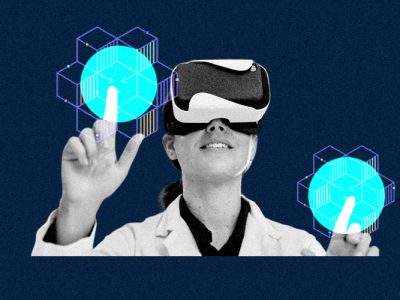
Medical innovations not only imTop 10 Medical Innovations that are a Boon to Modern Healthcare prove patient care but also ease some of the strain on our devoted healthcare workforce
To prevent another epidemic as terrible as the one that hit the world in the early twentieth century, the medical sector has been continuously innovating. Designers with the advancement of modern healthcare technology, have been creating cutting-edge, life-saving medical innovations that not only improve patient care but also ease some of the strain on our devoted healthcare workforce. These ideas address a range of issues in the healthcare and medical fields, from an award-winning inflatable stretcher design to a Dyson award-winning injectable attachment. They serve as a boon to contemporary medicine and serve as a warning that we can no longer take our health for granted. This article features the top 10 medical innovations that have improved modern healthcare.
1.The Inflatable Stretcher
The Inflatable Stretcher, created by Shih Chien University student Yu-Hsin Wu, offers a considerably safer alternative to move patients from the scene of the incident to the hospital. The Inflatable Stretcher’s innovative design cushions patients and even holds them in place, almost like wrapping them in bubble wrap. Furthermore, it even includes a first-aid kit to help treat wounds that need to be attended to right away without medical assistance.
2.Kubota’s Eyeglasses
Kubota, a Japanese pharmaceutical start-up, created unique eyewear that can treat or perhaps cure myopia. It’s a great medical innovation in the healthcare sector. Kubota’s wearable design has been enhanced with an array of nano projectors that beam light to the wearer’s retina in a certain pattern in order to blur objects in close proximity and make them appear farther distant. This enables one’s vision to return to normal and aids in the eyeball morphing back into its former shape. The glasses are intended to be worn for a few hours each day, typically while you’re unwinding at home or simply relaxing.
3.Cobi
In order to modify society’s perception of the elderly population, which is seen as a liability in particular when free mobility becomes a challenge for them, Cobi, a method of personal mobility for seniors, is intended to do two things. It goes without saying that the elderly generation will live a better, less reliant, mobile existence with something like the matte-finished Cobi! To get such credibility, the item is painstakingly made from two distinct components: a walker and a mobility aid that come together to make a modern wheelchair. Even more thrilling: Cobi operates autonomously. This can easily be one of the best medical innovations for the health purpose for the future of the healthcare industry.
4.Uray
Uray contributes something that some might dismiss as inconsequential. The appliance has a visually appealing design and, if mounted on a wall, might even be mistaken for a liquid soap dispenser. It not only makes the urine analysis instrument appear more approachable, but it also makes it less embarrassing for anyone else to observe. You are more likely to really use it and test your urine for any medical or health issues if you don’t have to take it out of storage every time you need to use it. In addition to making it look more intriguing, the coloured lower portion allows for manufacturer personalization.
5.The Caregiver
The Caregiver smart cane is evidence that the same healthcare technology should fulfil the needs of those who are not considered to be “common users,” if the main goal of healthcare technology is to improve lives. Although we “ordinary folk” have had access to bone-conducting hearing and camera-based smart navigation for decades, the Caregiver uses the technology to improve the lives of the elderly. To aid users with navigating and hearing clearly, the smart cane has its own built-in GPS tracker, radar-imaging cameras, and bone-conducting earpieces. The Caregiver docks in its wireless charging base while not in use, which helps to recharge its batteries.
6.The Multi Scoop Pro
The name “Multi Scoop Pro” refers to the fact that patients can be scooped up rather than being lifted and placed onto a stretcher. The stretcher can be positioned on either side of the patient lying on the ground because it splits open laterally. When the two sections are united once more, the patient is scooped onto the stretcher platform so that it can be raised and taken to the closest ambulance. Patients with less severe wounds can be transported by a single medic while they are comfortably seated by simply folding the Multi Scoop Pro into a wheelchair. This could also ease the work of healthcare workers while trying to lift a patient.
7.The Medicine Delivery Drone
The Medicine Delivery Drone is primarily targeted at city dwellers who are unable to go out on their own to get medications, despite the fact that it was intended for urban environments. The drone, which is made expressly for transporting tablets, may go between a drugstore and a home, delivering vital medications without requiring the patient to make an effort. The drone was created in reaction to China’s rigorous Zero Covid policy, where lockdowns are implemented to help contain the virus, frequently making it difficult for people with critical illnesses to leave their homes and purchase medications. In these circumstances, the drone takes care of the work for them by delivering prescriptions by travelling between recipients and local pharmacies.
8.The Pinsoft
The James Dyson National Award-winning Pinsoft is an injection attachment that helps patients overcome trypanophobia, or a fear of needles, despite the fact that its appearance may easily lead one to believe it is a fine meat tenderizer. Despite its frightening appearance, the Pinsoft surrounds an injection, and its numerous round-tipped prongs assist, stimulate and confuse your skin as the needle passes through. Your brain can’t quickly distinguish between the prongs contacting your skin and the needle piercing it, so the mild sensation from the prongs distracts you. You have already finished your shot by the time you understand what has happened!
9.Gelasette
A biodegradable cellulose-based fast test was originally developed by the designer in 2020, but he has since developed something based on it with an upgraded and optimized design. The good qualities required to replicate gelatin are not present in this new prototype’s use of plastic. This substance is entirely biodegradable and is already used in other healthcare technology. You obtain fewer than 3 hours of water dispersibility and 4 weeks of soil biodegradability with this substance.
10.The CIONIC Neural Sleeve
The CIONIC Neural Sleeve is a wearable leg sleeve that uses electrical stimulation and artificial intelligence to help persons with mobility impairments walk and move around more freely. In essence, bionic clothing that enhances human mobility can assist in walking. And unlike other devices that could look robotic and uncomfortable, this is something that is both simple to put on and take off and comfortable to wear every day



















